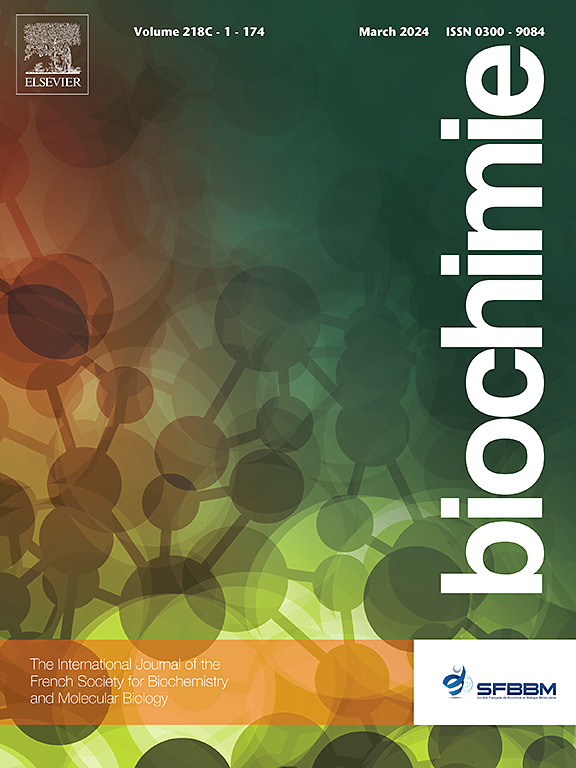Phenotypic changes associated with continuous long term in vitro expansion of bone marrow-derived mesenchymal stem cells
IF 3
3区 生物学
Q2 BIOCHEMISTRY & MOLECULAR BIOLOGY
引用次数: 0
Abstract
In vitro expansion of mesenchymal stem cells is necessary to obtain a higher cell number for clinical applications. However, long-term expansion can produce significant phenotypic changes on these cells, decreasing their therapeutic utility. Therefore, understanding the phenotypic changes that long-term expansion triggers in mesenchymal stem cells will allow for better and more consistent cell therapy results. Here, we evaluate the phenotypic changes caused by continuous passaging through colony forming unit-fibroblast assay, senescence beta-galactosidase staining, morphology examination, secretome analysis, surface marker expression, protein quantification, osteogenic and adipogenic differentiation, and CD4+ T lymphocyte immunosuppressive potential. Long-term in vitro culture decreases mesenchymal stem cell osteogenic potential and self-renewal, increases cell size, and senescence, but does not consistently affect adipogenic differentiation. Surface marker expression remains similar for positive and negative markers, while secretory phenotype shifts with decreased p14ARF, MMP-3, p21 Waf1/Cip1,ENA-78, GCP-2, GROα, IL-3, IL-7, IL-8, RANTES, TNFβ, and VEGF-A expression, and increased p53, p16 INK4a, MCP-1, and SDF-1 expression. Immunomodulatory potential remains unchanged. These findings can help better understand the phenotypic changes that mesenchymal stem cells undergo while expanded in vitro.

与骨髓间充质干细胞体外连续长期扩增相关的表型变化
间充质干细胞的体外扩增是获得临床应用所需的较高细胞数的必要条件。然而,长期扩增会对这些细胞产生显著的表型变化,降低其治疗效用。因此,了解间充质干细胞长期扩张触发的表型变化将允许更好和更一致的细胞治疗结果。在这里,我们通过集落形成单位-成纤维细胞实验、衰老β -半乳糖苷酶染色、形态学检查、分泌组分析、表面标记物表达、蛋白质定量、成骨和成脂分化以及CD4+ T淋巴细胞免疫抑制电位来评估连续传代引起的表型变化。长期体外培养会降低间充质干细胞成骨潜能和自我更新,增加细胞大小和衰老,但不会持续影响成脂分化。表面标记物阳性和阴性标记物的表达保持相似,而分泌表型发生变化,p14ARF、MMP-3、p21 Waf1/Cip1、ENA-78、GCP-2、GROα、IL-3、IL-7、IL-8、RANTES、tnf - β和VEGF-A表达降低,p53、p16 INK4a、MCP-1和SDF-1表达升高。免疫调节潜能保持不变。这些发现有助于更好地理解间充质干细胞在体外扩增时所经历的表型变化。
本文章由计算机程序翻译,如有差异,请以英文原文为准。
求助全文
约1分钟内获得全文
求助全文
来源期刊

Biochimie
生物-生化与分子生物学
CiteScore
7.20
自引率
2.60%
发文量
219
审稿时长
40 days
期刊介绍:
Biochimie publishes original research articles, short communications, review articles, graphical reviews, mini-reviews, and hypotheses in the broad areas of biology, including biochemistry, enzymology, molecular and cell biology, metabolic regulation, genetics, immunology, microbiology, structural biology, genomics, proteomics, and molecular mechanisms of disease. Biochimie publishes exclusively in English.
Articles are subject to peer review, and must satisfy the requirements of originality, high scientific integrity and general interest to a broad range of readers. Submissions that are judged to be of sound scientific and technical quality but do not fully satisfy the requirements for publication in Biochimie may benefit from a transfer service to a more suitable journal within the same subject area.
 求助内容:
求助内容: 应助结果提醒方式:
应助结果提醒方式:


